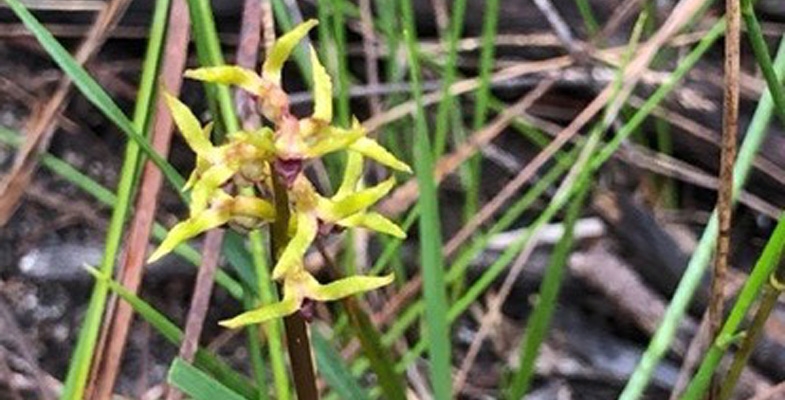The local orchid Genoplesium baueri (endangered), also known as Bauer’s Midge Orchid, was added to the IUCN Red List of Threatened Species last year at COP 15. It is currently also listed as endangered under the NSW and federal biodiversity conservation legislation.
This classification means that it is at high risk of extinction in the near future. The inclusion in the Red List adds international significance to the classification and opens up international funding opportunities for people working to conserve these orchids.
There are some populations in the St Ives Showground precinct in the vicinity of the Wildflower Garden and nursery. This may restrict development because the plan of management mentions the possibility of road connections and increased parking between the Wildflower Garden and Showground.
Reasons for endangered classification
The NSW Scientific Committee (2012) has identified the following reasons for the endangered classification.
The main reason is the orchid’s highly restricted geographic distribution that is projected to continue to decline. The number of populations of G. baueri is uncertain. Based on records from herbaria and sightings, there are estimated to be between 20 and 30 populations between Port Stephens and Ulladulla and likely to be less than 250 individuals.
Geographic distribution is precarious for the survival of the species based on severe fragmentation of populations; continuing decline inferred and projected due to current threats of disturbance from trail bike riding, rubbish dumping and urban development; and extreme fluctuations in the number of mature individuals.
The species does not produce a new tuber at the end of each growing season but instead persists from the same tuber-like perennial root. Jones (2006) suggests that cultivation is ‘impossible’.
Plants do not regularly appear each year, despite favourable seasonal conditions. When plants do appear, they are only above ground for approximately two months before dying back to a dormant state. Whilst the appearance of plants above ground may fluctuate from year to year, individual plants may remain dormant in the soil. Nevertheless the number of plants of G. baueri is considered to be low.
Reference
Jones DL (2006) A Complete Guide to Native Orchids of Australia including the Island Territories. Reed New Holland: Sydney

